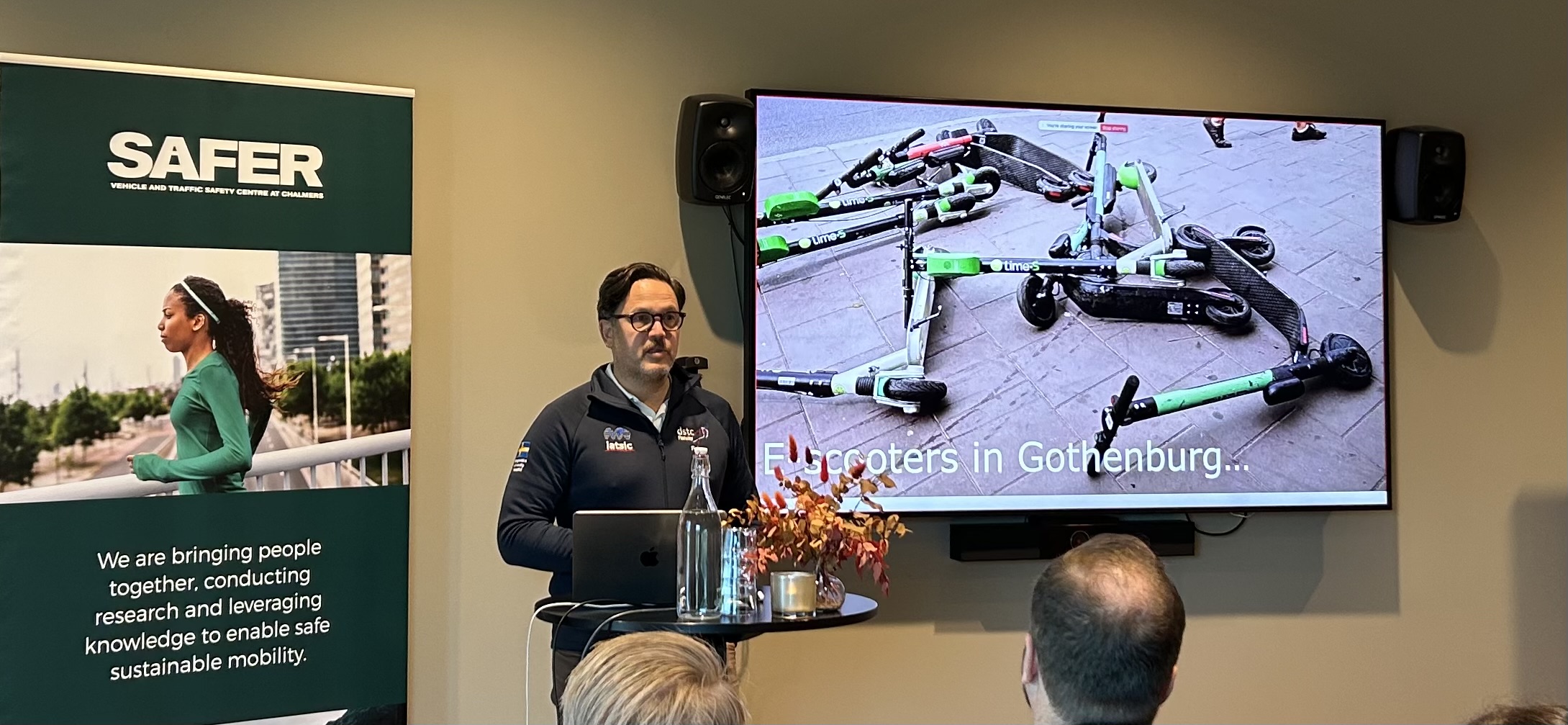SAFER Research Day at The Pier: Injury Mechanisms & SAFER HBM
How much can the human body withstand – and how can we design the transport system around those limits? That was the red thread during SAFER Research Day at Clarion The Pier, where researchers, authorities and industry met to discuss how new knowledge can be transformed into real road safety benefits.
Summary of the presentations
Rikard Fredriksson, Swedish Transport Administration – Challenges for a Safe System
Sweden is internationally recognised as a role model through Vision Zero. Road fatalities have been reduced by two thirds thanks to speed-adapted infrastructure, safer vehicles (88% rated 5 stars in EuroNCAP) and almost complete sobriety among road users. But the remaining challenges are tougher:
- Head-on collisions – must be addressed with passive safety, e.g. truck front-end compatibility.
- Elderly occupants – more vulnerable at lower speeds, requiring adaptive restraints.
- Pedestrians and cyclists – particularly head injuries from windscreens and single-bicycle crashes.
- Whiplash – demands renewed focus, especially since women are significantly more at risk.
ADAS can help in some cases, but will never fully replace passive protection. Rikard stressed: “Passive safety is needed for a Safe System.”
Ragnar Ang, Sahlgrenska University Hospital – Long-term effects of e-scooter injuries
E-scooters have created a completely new patient group: young, often intoxicated riders with severe head and facial injuries. Examples include 31 days of inpatient care, 472 days of sick leave and repeated surgeries in just one season. Only 10% wore helmets. Most crashes occur in the evenings and at night. Stricter regulations have reduced accidents, but privately owned scooters still pose risks.
Sara Kallin, Jönköping University – Working Group Long-term traffic-related impairments
Whiplash, spinal injuries and upper extremity fractures cause lifelong consequences. The working group is mapping which injuries are most urgent to prevent, how to combine registry data and how to further develop Human Body Models for better prediction.
Oksana Yastremska-Kravchenko, Lund University – Surrogate measures for single-bicycle crashes
Most serious cyclist injuries stem from single accidents, not car collisions. By measuring “near-misses” (braking, leaning, grip loss), it is possible to predict and prevent falls – a step towards infrastructure that stops accidents before they happen.
Bengt Pipkorn, Volvo Cars – When to use virtual versus physical testing
Virtual simulations are essential to develop next-generation protection systems, but must always be calibrated against physical testing. The combination is key for credible results and the future of international safety standards, such as EuroNCAP.
Jolyon Carroll, Autoliv – Protection for motorcyclists and cyclists
Motorcyclists are the most vulnerable road users worldwide. The new motorcycle rider model in SAFER HBM can simulate crashes in different riding postures and evaluate protective systems such as airbags. For cyclists, a new shoulder model is being developed to predict fractures and support the creation of improved test methods.
Jonas Östh, Volvo Cars – Neck injury prediction in new vehicle environments
An advanced cervical spine model in SAFER HBM enables simulation of neck injuries in new seating positions, including muscle control and tissue-level injury prediction. This is critical as automated vehicles introduce new interior concepts.
Karl-Johan Larsson, Autoliv – Torso and gender variation in HBMs
New chest and pelvis models allow better injury prediction for both men and women, across different ages and body types. This paves the way for safety systems designed to protect the entire population – not just the “average male.”
The way forward for SAFER
The discussions highlighted four priority areas where SAFER can make a real difference:
- Building knowledge bridges – linking medical research, engineering and behavioural science.
- Advancing test methods – driving development and standardisation of virtual testing with HBMs.
- Focus on long-term effects – developing a shared knowledge base on lifelong traffic-related impairments and their societal costs.
- Safety for vulnerable road users – particularly cyclists and motorcyclists.
To reach Vision Zero, the human body must remain the benchmark: its biological tolerance defines the limits of the entire transport system. The research presented at The Pier showed that we have the tools – but also that we must dare to prioritise the toughest challenges: head-on collisions, elderly vulnerability, single-bicycle crashes and long-term impairments. SAFER’s role is clear: to act as the catalyst that transforms research into standards, protection systems and policy – and by doing so, save lives.

